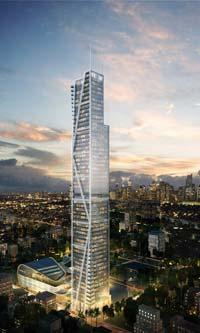The stars are aligned for the Philippines

Expats, celebs and investors are all eyeing the Philippines as an unprecedented boom is promising fortunes for a nation once known as the poor-man of Southeast Asia.
Much of the success for the economic boom can be put down to President Benigno Aquino who has been on a tough road of cleaning up corruption, bringing down budget deficits and boosting spending on infrastructure.
This has included investment in its crumbling roads, train network and airports, which are being upgraded with the help of private company partnerships.
Another spin-off for the Philippines has been a growing tourism industry as new hotels, shopping malls and casinos are built across the nation.
These industries are creating plenty of opportunities for expats to relocate to south-east Asia’s second most populous nation, with 92 million citizens.
The south-east Asian nation had enviable economic growth for the first quarter of this year of 6.4 per cent while its stock market rocketed 20 per cent. Western firms have been flocking to the Philippines to take advantage of its cheap labour force said media reports.
The country now employs more than 600,000 in outsourced roles such as in call centres.
While the economy is booming so too is tourism and the property market.
US billionaire Donald Trump is building a 56-storey Trump Tower in the capital Manila, while Versace is putting up its own tower nearby.
Hotel heiress Paris Hilton has also been a frequent visitor to the Philippines, having designed and promoted an upmarket residential project in Manila which includes a manmade beach.
The good times are into their fourth year, fuelled by steady economic growth, Western firms offshoring jobs to the Philippines, the buying power of millions of Filipinos working abroad and low interest rates.
“It just so happens that today the stars are aligned... we have never seen the economy this bullish,” said Antonino Aquino, president of Ayala Land, one of the country’s biggest property developers.
Ayala Land is one of the main players in what industry figures describe as an unprecedented construction boom that is transforming the skyline of the nation’s capital, as well as many provincial cities.
In Manila, formerly sleepy pockets such as the Fort army base and the rundown Eastwood industrial zone have become chic, new business districts, catering mainly for the fast-growing outsourcing sector.
At the Fort, Ayala Land this year broke ground on its US$714-million (S$896) One Bonifacio High Street project, which when completed in 2017 will host the Philippine Stock Exchange, a Shangri-La hotel, and retail outlets.
The project also has a 63-storey residential tower, with 298 suites ranging from US$500,000-US$1.9 million that sold out last month in 96 hours, according to the company.
Across the country, more than 850,000 square metres (9.1 million square feet) of office space and 14,000 residential units will enter the market this year, property consultants CBRE Philippines said in a report.
It said many of the residential units catered for a growing middle-class on the fringes of Manila and other urban centres.
The building boom has also spread to hotels, shopping malls and casinos, triggering hopes of a long-anticipated take-off of the underdeveloped tourism industry.
Three of the world’s biggest gaming industry leaders are building a US$4-billion, 100-hectare (247-acre) Entertainment City complex of casinos on Manila Bay.
The first of the casinos are set to open early next year.
Meanwhile, Trump, the New York mogul, has put his name to a US$150-million, 56-storey, curtain-glass-walled Trump Tower that broke ground in the financial district this year.
“High-end buyers look for key differentiated features,” said Robbie Antonio, managing director of Century Properties that is behind the Trump Tower development.
He said 70 per cent of the 220 residential units, which are worth up to $1.86 million each, have been sold.
The firm is putting up a nearby tower designed by the Versace fashion house - the first of its kind in Asia - featuring individual wading pools as well as its iconic Medusa-head brand imprinted on lamp shades and cutlery.
Century also flew in socialite and hotel heiress Hilton to Manila last year to help design and promote a suburban Manila residential project that features a man-made beach.
Industry players say the property boom reflects the overall status of the nation’s economy as it picks up steam after decades of underperforming compared with many of its Asian neighbours.
The economy grew 6.4 per cent in the first quarter, the stock market has surged 20 per cent this year to hit all-time highs, and the country’s credit rating has been bumped up to just a step below investment grade.
The central bank’s benchmark interest rates are also at historic lows - 4.0 per cent for the benchmark borrowing rate - ensuring large piles of cheap cash for property development.
Aside from the macro economic picture, real estate analysts point to the outsourcing phenomenon as one of the key drivers of the property boom.
From virtually nothing a decade ago, outsourcing now employs more than 600,000 people and is worth $11 billion annually, according to the main industry association which is forecasting 15 per cent growth in the years ahead.
Many of the skyscrapers are being built to cater for the outsourcing workforce, which performs a myriad of tasks from call centre duties to designing architectural plans for foreign firms.
Meanwhile, roughly nine million Filipinos who work overseas are sending large chunks of the $22 billion they earn - equal to 10 per cent of the nation’s gross domestic product - back home, often investing in real estate.
The frenetic building pace has some quarters anxious over a potential property bubble, with the global economic woes adding to concerns.
Leave a comment









